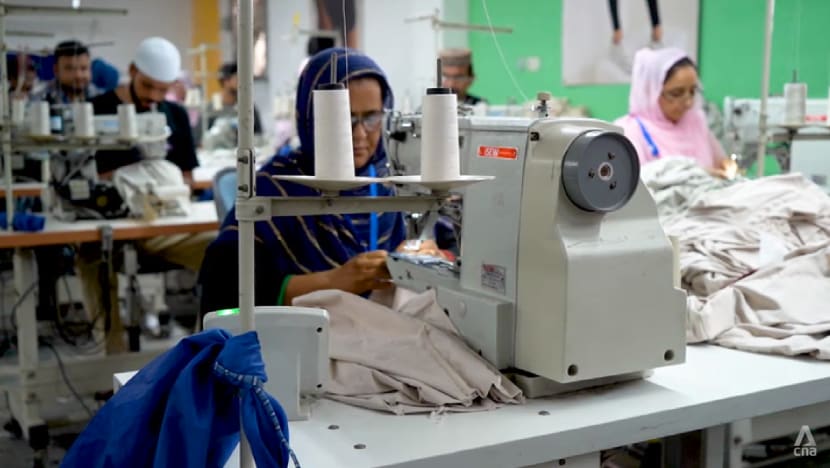US-Pakistan trade deal brings relief to exporters, but also pressure to innovate
Analysts believe Pakistan’s ability to turn tariff relief into lasting prosperity will depend on converting short-term gains into sustained market share.

Textiles remain Pakistan’s most valuable export, with up to 90 per cent of its shipments going to the United States.

This audio is generated by an AI tool.
FAISALABAD, Pakistan: Businesses in Pakistan are optimistic that the country’s recent trade agreement with the United States – featuring a 19 per cent tariff rate – will give them a competitive edge in the region.
The tariff rate is far lower than the earlier threat of 29 per cent, bringing relief to businesses, and is also much lower than those imposed on Pakistan’s main competitors.
The US is Pakistan’s largest customer, purchasing more than US$5 billion worth of goods last year.
EDGE OVER REGIONAL COMPETITORS
Textiles remain Pakistan’s most valuable export, with up to 90 per cent of its shipments going to the US. Many believe the latest tariff announcement could push that number even higher.
Apparel maker Amami Clothing is optimistic that business will soon pick up. Its sportswear is shipped to retailers across the globe, with much of it bound for the US.
“In the textile sector, the US buys the most from India, mainly cotton, but (Indian exporters) are facing tariffs of 50 per cent. That’s a huge difference,” said its CEO Asmat Khan.
“Because of this, we’re getting daily inquiries, which shows us that many customers who were working with India will gradually shift to Pakistan,” he added.
“It's good luck for Pakistan, and I feel if this continues, the textile and apparel sector will see a huge boom.”
Last month, the US and Pakistan struck a trade deal that Islamabad said would lead to increased investment.
While further negotiations are needed to iron out the finer details, observers said the trade pact – and Pakistan securing it ahead of arch-rival India – marks a significant win.
“Now the advantage is big enough that even on the economies of scale, (India) would find it difficult to compete,” said public policy expert Khaqan Hassan Najeeb, a former adviser to Pakistan’s Ministry of Finance.
“Pakistan has successfully kind of recognised how to engage with the US administration.”
LANDMARK TRADE PACT
The deal, announced by US President Donald Trump on social media, also includes a pledge to develop Pakistan's “massive oil reserves”.
Observers told CNA that the agreement offers a chance to revive Pakistan’s struggling economy.
“If we are not able to earn that much dollars through exports, we should welcome dollar inflows in the form of (foreign direct investments), which will bring capital and also other economic opportunities,” said Ali Salman, founder and executive director of the Policy Research Institute of Market Economy, an independent economic policy think tank in Islamabad.
But economists warn that while exports are likely to rise, steep electricity prices and labour costs could undermine the country’s economic gains.
Analysts believe Pakistan’s ability to turn tariff relief into lasting prosperity will depend on converting short-term gains into sustained market share.
Some industry players also argue that capturing a larger share of the US market will require innovation.
Dastgir Butt, director of kitchen appliances factory Sonex Die Cast, said: “If we want to win, we need to develop new products which are in high demand in the US, like cast iron.”
















